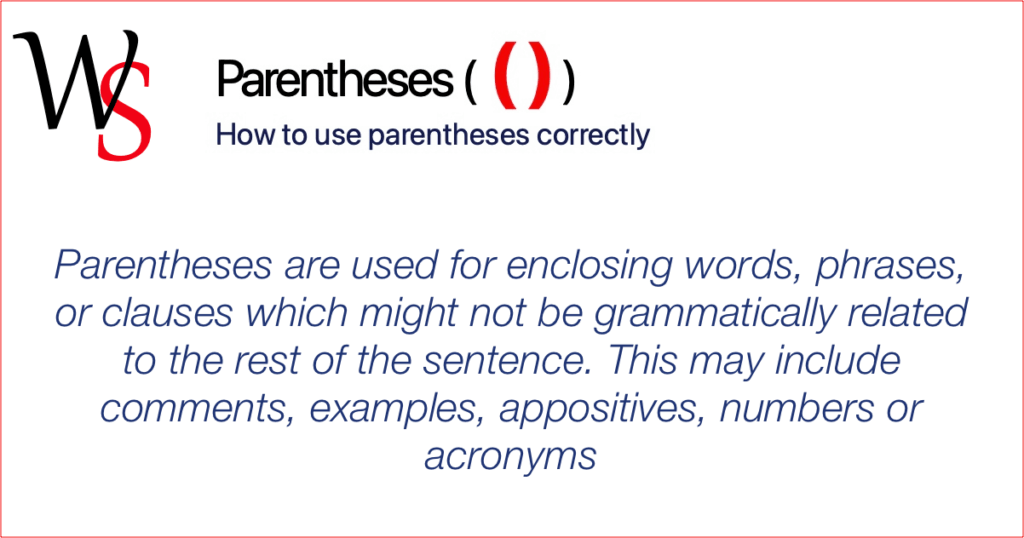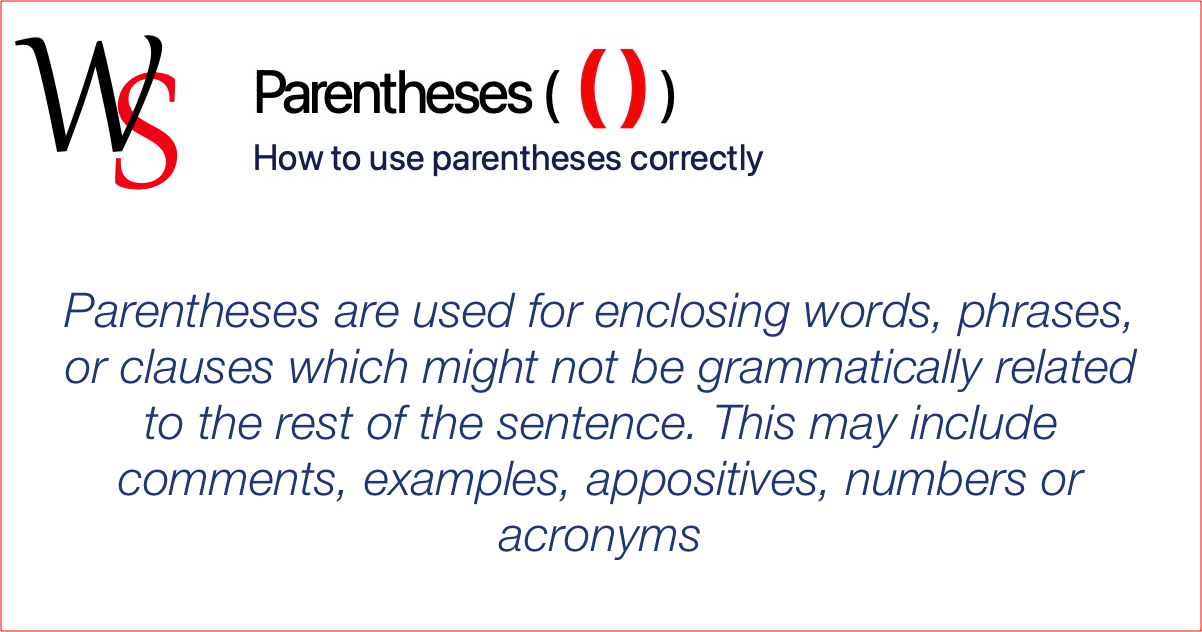
The Unsung Hero of Syntax: Understanding the Importance of End Parentheses
In the realm of programming, mathematics, and even everyday writing, the humble end parenthesis often goes unnoticed. Yet, its presence, or absence, can dramatically alter the meaning and functionality of an expression. From simple calculations to complex code structures, understanding the role of the end parenthesis is crucial for clarity and accuracy. This article delves into the significance of this often-overlooked punctuation mark, exploring its diverse applications and highlighting the potential pitfalls of its misuse.
The Fundamental Role of Parentheses
At its core, the parenthesis serves as a grouping symbol. It dictates the order of operations, ensuring that certain calculations or expressions are evaluated before others. This is especially critical in mathematical equations and programming code, where the sequence of operations directly impacts the final result. Consider the simple expression: 2 + 3 * 4. Without parentheses, the multiplication would be performed first (3 * 4 = 12), followed by the addition (2 + 12 = 14). However, if we introduce parentheses as follows: (2 + 3) * 4, the addition is prioritized (2 + 3 = 5), and the result is then multiplied by 4 (5 * 4 = 20). The end parenthesis, therefore, is just as important as the opening one in defining the scope and precedence of the operation.
Parentheses in Mathematical Expressions
In mathematics, parentheses are indispensable for defining complex equations and formulas. They allow mathematicians to specify precisely how terms should be grouped and evaluated. From basic arithmetic to advanced calculus, parentheses play a vital role in ensuring that expressions are interpreted correctly. Failure to properly use end parentheses can lead to incorrect calculations and fundamentally flawed results. For example, in statistical analysis, formulas often involve nested parentheses to handle multiple levels of calculations, such as calculating standard deviations or confidence intervals. Without the proper placement of both opening and end parentheses, the entire statistical analysis could be compromised.
Parentheses in Programming Languages
In programming, the use of parentheses extends beyond simple arithmetic. They are used to define function arguments, control the flow of execution, and create complex data structures. Most programming languages rely heavily on parentheses to delineate code blocks and specify the order in which operations are performed. For example, in a function call, the arguments passed to the function are enclosed within parentheses. Similarly, conditional statements like `if` and `while` often use parentheses to define the conditions that must be met for the code block to be executed. The correct placement of the end parenthesis is essential for the code to compile and run correctly. A missing or misplaced parenthesis can result in syntax errors, logical errors, and even security vulnerabilities.
Function Arguments
Functions are the building blocks of most programming languages. They encapsulate a specific set of instructions that can be reused throughout the code. When calling a function, the arguments passed to the function are enclosed within parentheses. The number and type of arguments required by a function are defined in its declaration. The end parenthesis signals the end of the argument list, indicating to the compiler or interpreter that all necessary information has been provided to the function. Without the end parenthesis, the compiler would not know where the argument list ends, leading to a syntax error.
Conditional Statements
Conditional statements allow programs to make decisions based on certain conditions. The most common conditional statements are `if`, `else if`, and `else`. The condition being evaluated is typically enclosed within parentheses. The end parenthesis marks the end of the condition, allowing the program to determine whether the code block associated with the condition should be executed. For example, `if (x > 5)` checks if the value of `x` is greater than 5. If the condition is true, the code block following the `if` statement is executed. The presence of the end parenthesis is crucial for the program to correctly interpret the conditional statement.
Order of Operations in Code
Just like in mathematical expressions, parentheses in programming code dictate the order of operations. This is particularly important when dealing with complex expressions involving multiple operators. By using parentheses, programmers can ensure that operations are performed in the desired sequence. The end parenthesis helps to clearly define the scope of each operation, preventing ambiguity and ensuring that the code behaves as expected. Failure to use parentheses correctly can lead to unexpected results and difficult-to-debug errors.
Common Mistakes and How to Avoid Them
Despite their importance, parentheses are often misused, leading to errors and confusion. One of the most common mistakes is forgetting to include the end parenthesis. This can happen especially in long or complex expressions, where it’s easy to lose track of the opening and closing parentheses. Another common mistake is mismatched parentheses, where the number of opening parentheses does not match the number of closing parentheses. This can also occur when parentheses are nested within each other, making it difficult to visually verify that they are properly balanced. To avoid these mistakes, it’s helpful to use a code editor or IDE that automatically highlights matching parentheses. Additionally, breaking down complex expressions into smaller, more manageable chunks can make it easier to keep track of the parentheses. Always double-check your code to ensure that all parentheses are properly placed and balanced.
The Importance of Balanced Parentheses
The concept of balanced parentheses is fundamental in computer science. A string of parentheses is considered balanced if each opening parenthesis has a corresponding closing parenthesis, and the parentheses are properly nested. In other words, for every opening parenthesis, there must be a matching end parenthesis that appears later in the string, and the parentheses must be closed in the correct order. Balanced parentheses are essential for the correct parsing and evaluation of expressions in programming languages, compilers, and other software systems. Algorithms for checking balanced parentheses are widely used in various applications, such as syntax checking, code validation, and data structure analysis. Ensuring that parentheses are balanced is crucial for the reliability and correctness of software systems.
Beyond Programming: Parentheses in Writing
The use of parentheses extends beyond the technical domains of mathematics and programming. In writing, parentheses are used to provide additional information, clarifications, or asides. They allow writers to insert supplementary details without disrupting the flow of the main text. Parenthetical statements can be used to define terms, provide examples, or offer alternative perspectives. While parentheses can be a useful tool for adding clarity and depth to writing, it’s important to use them judiciously. Overusing parentheses can make the text cluttered and difficult to read. The end parenthesis in writing is just as important as the opening one, signaling the end of the parenthetical statement and allowing the reader to seamlessly return to the main text.
The Future of Parentheses
While the fundamental role of parentheses is unlikely to change, their usage may evolve with advancements in technology. As programming languages become more sophisticated and user-friendly, there may be new ways to represent and manipulate expressions that minimize the need for explicit parentheses. For example, some programming languages use indentation to define code blocks, reducing the reliance on parentheses for controlling the flow of execution. However, the underlying concept of grouping and prioritizing operations will likely remain essential, regardless of the specific syntax used. The end parenthesis, in some form or another, will continue to play a vital role in ensuring clarity and accuracy in both technical and non-technical contexts. [See also: Advanced Programming Techniques]
Conclusion
The end parenthesis, though seemingly insignificant, is a critical component of mathematical expressions, programming code, and even everyday writing. Its presence or absence can dramatically alter the meaning and functionality of an expression. Understanding its role in defining the order of operations, delimiting function arguments, and providing supplementary information is essential for clarity and accuracy. By avoiding common mistakes and ensuring that parentheses are properly balanced, we can harness their power to create more robust, reliable, and understandable systems. So, the next time you encounter an end parenthesis, take a moment to appreciate its unsung contribution to the world of syntax.

